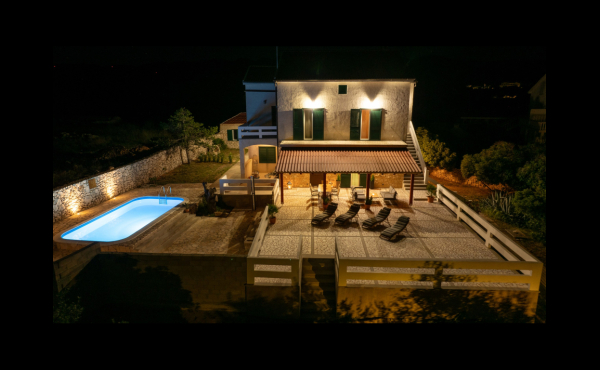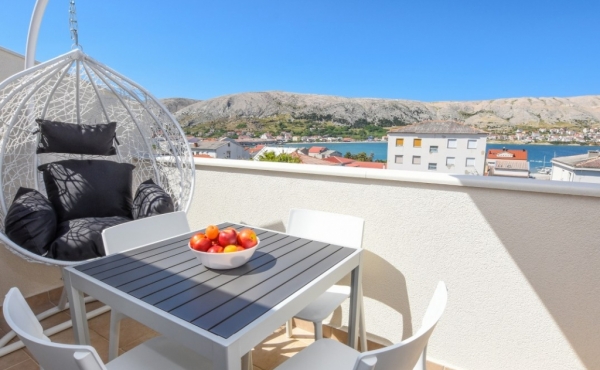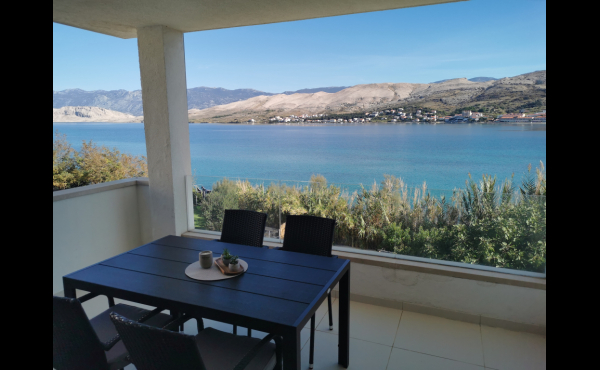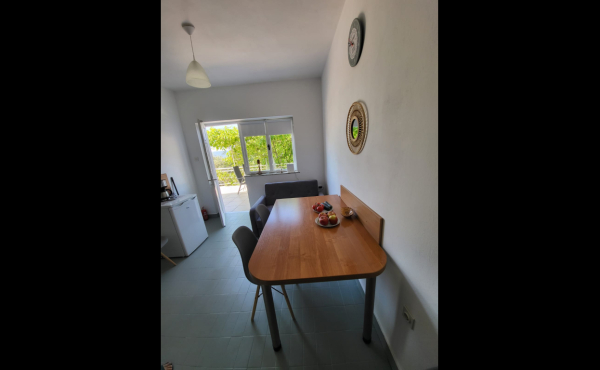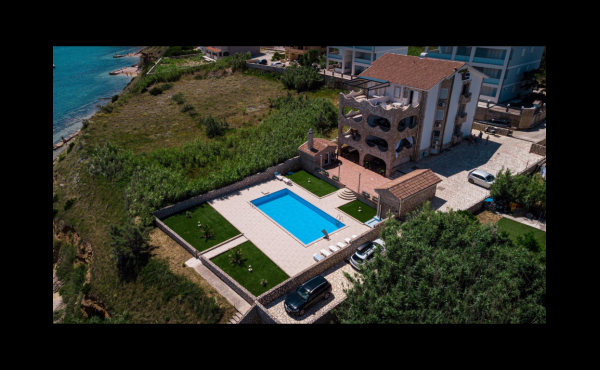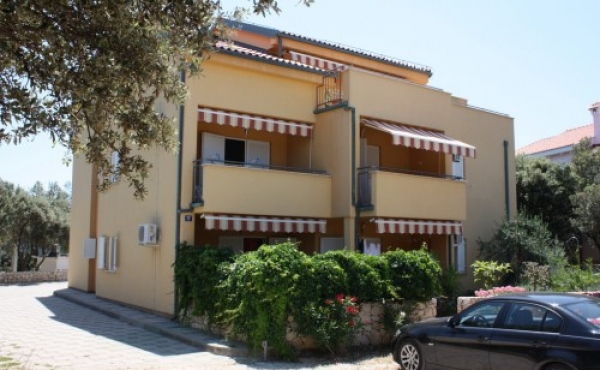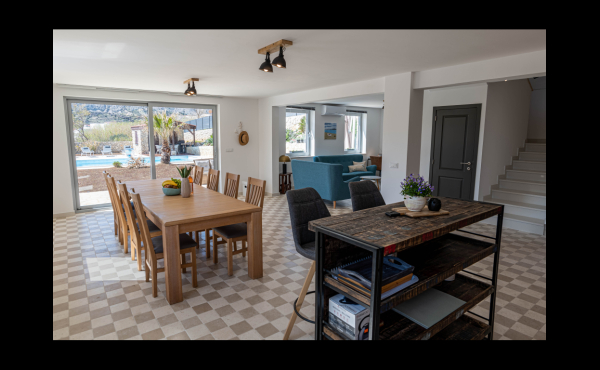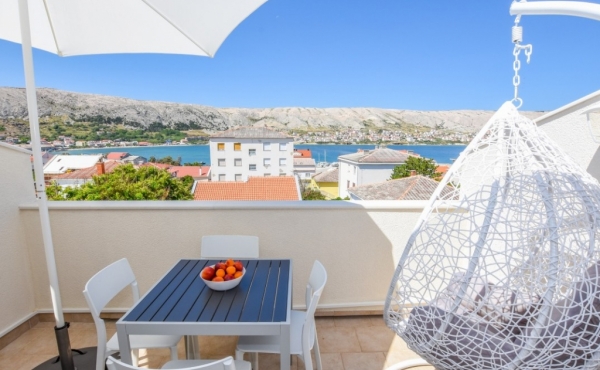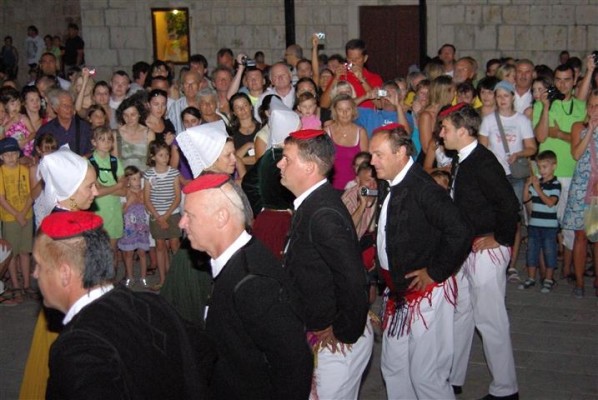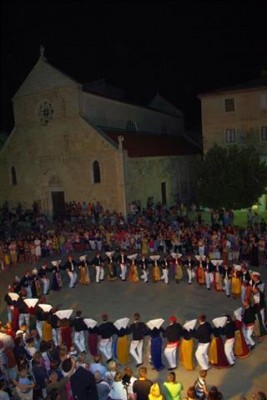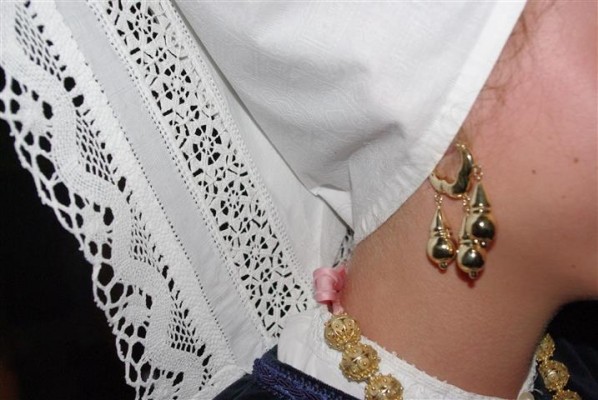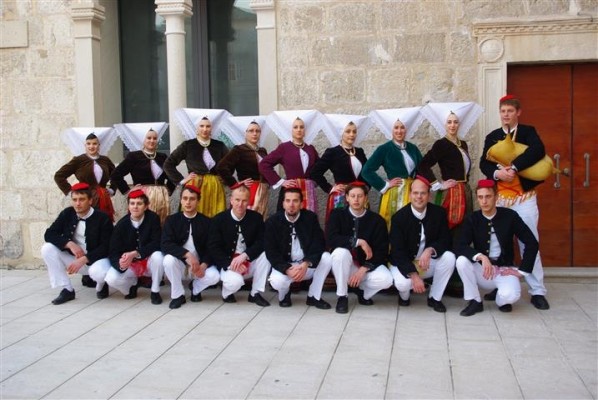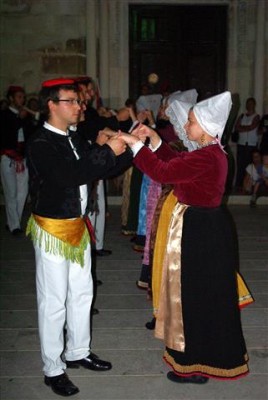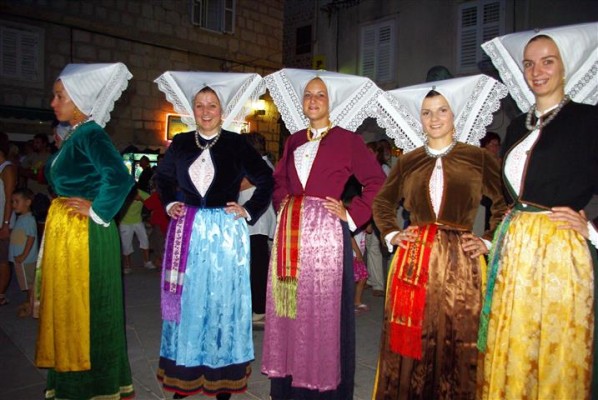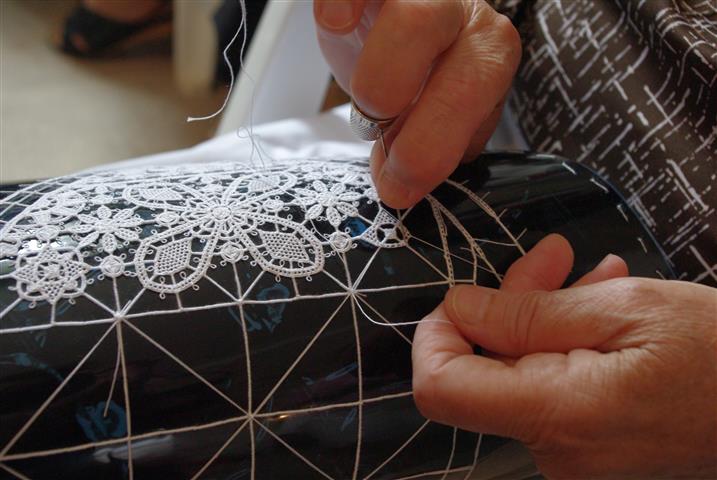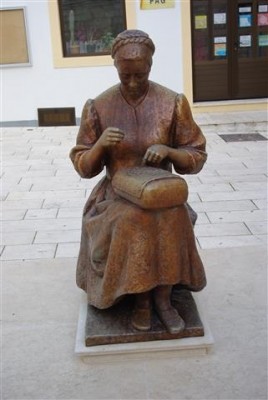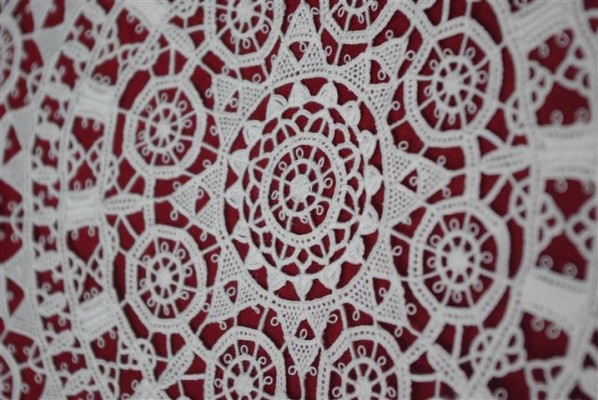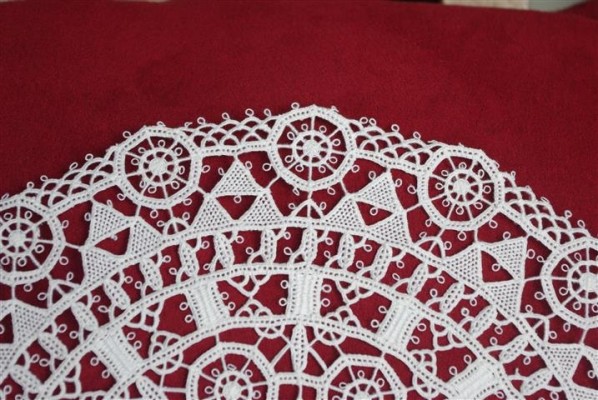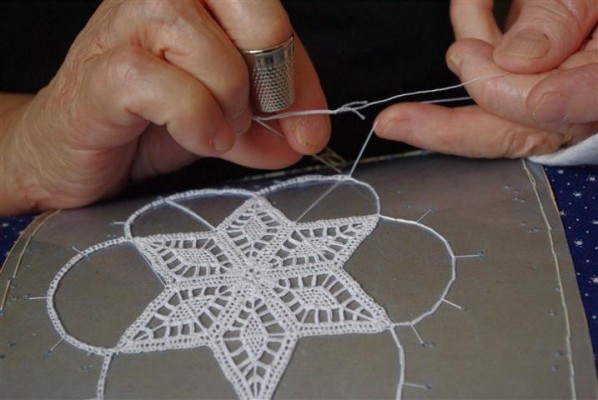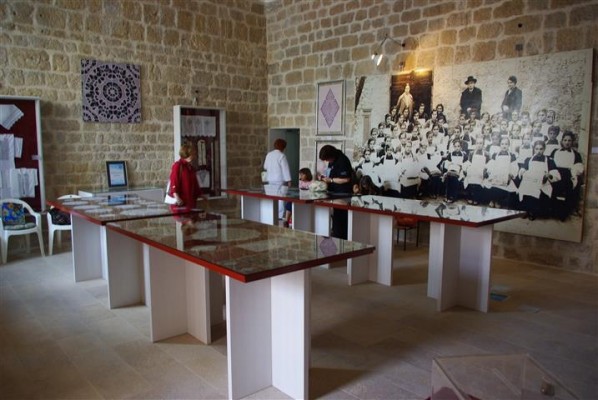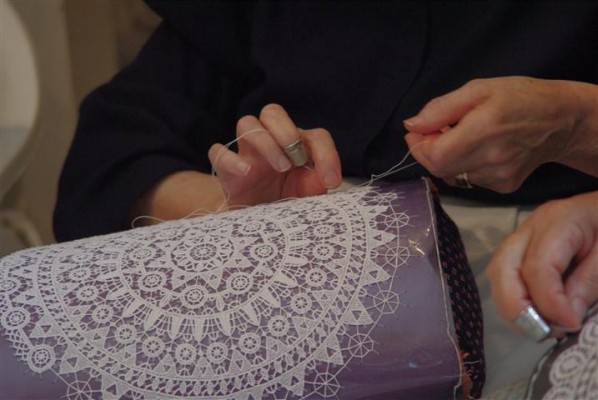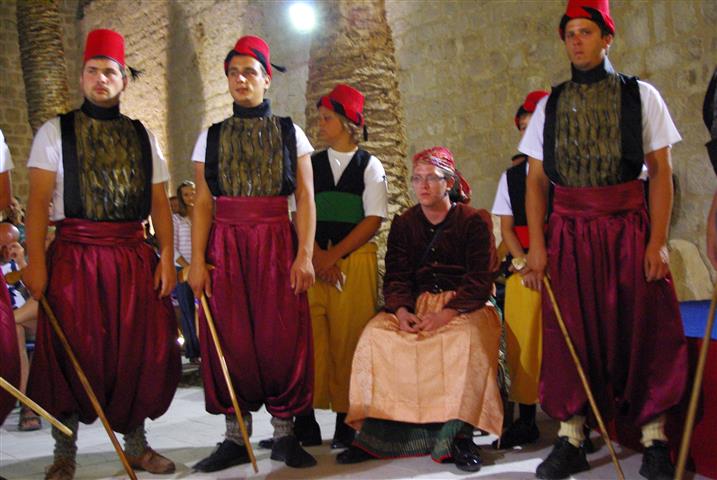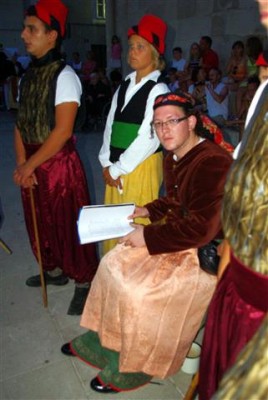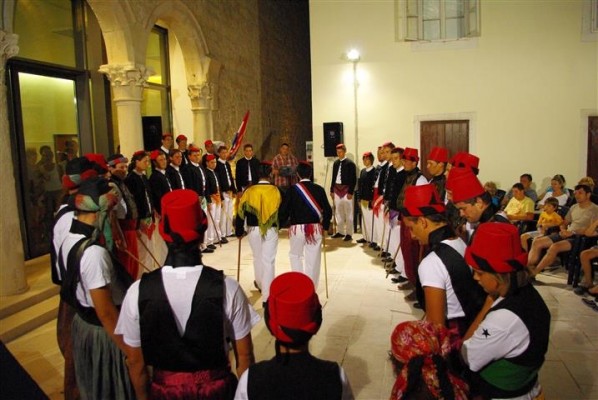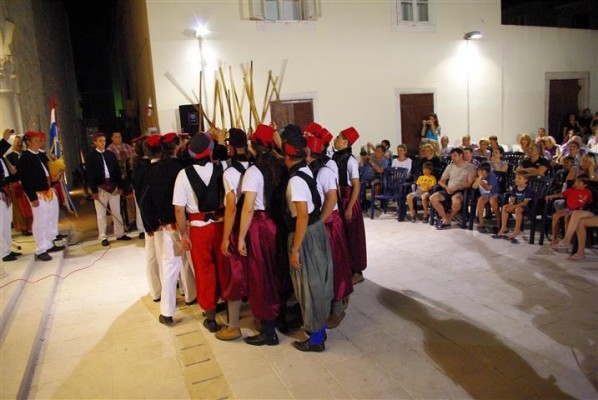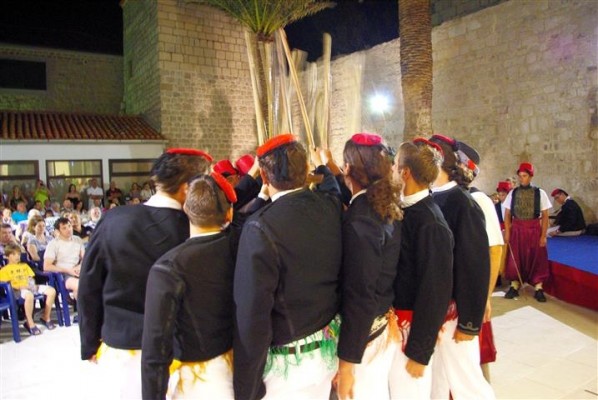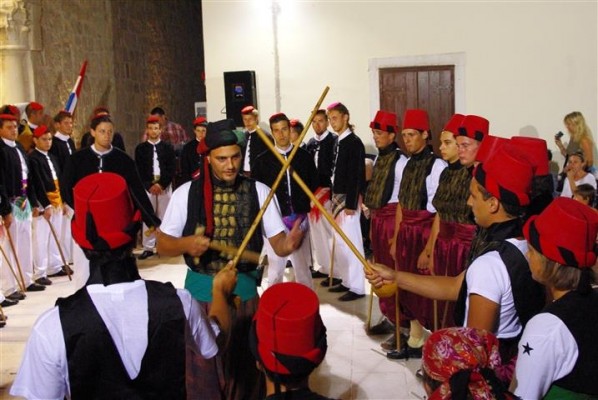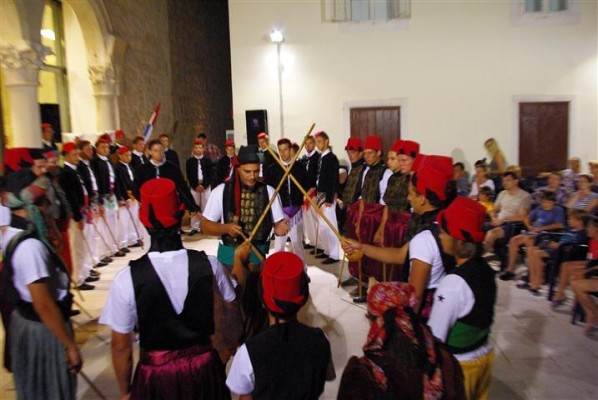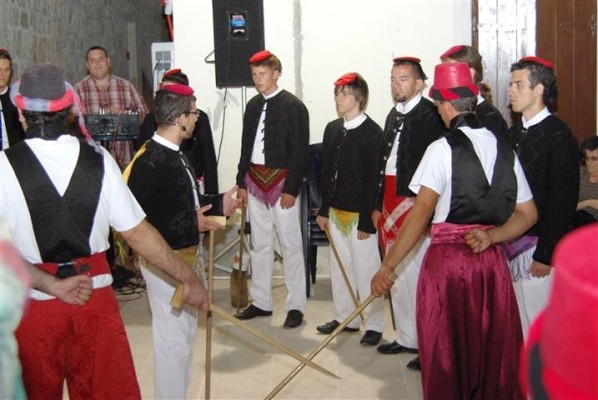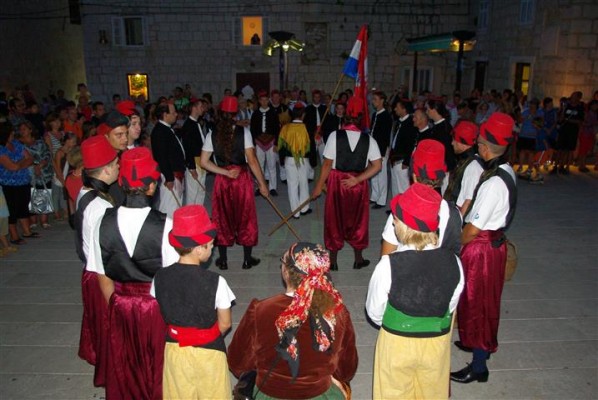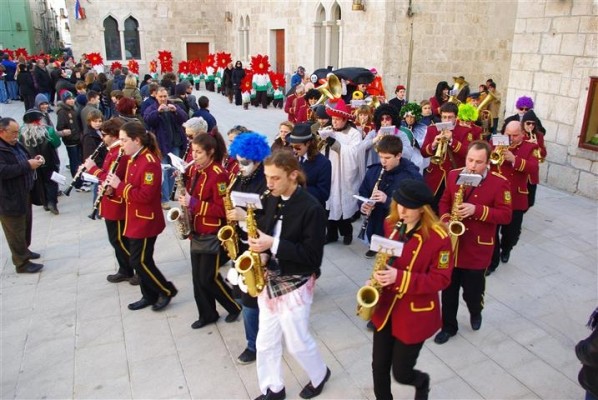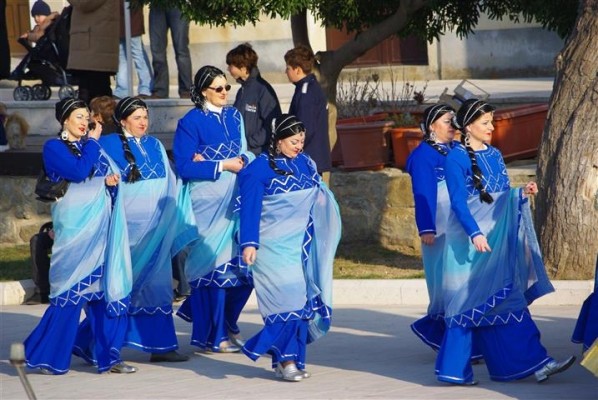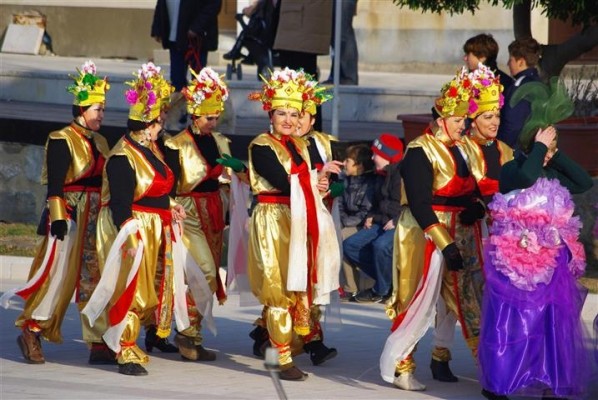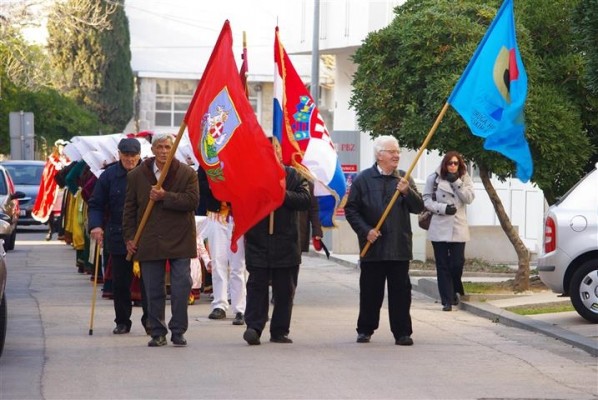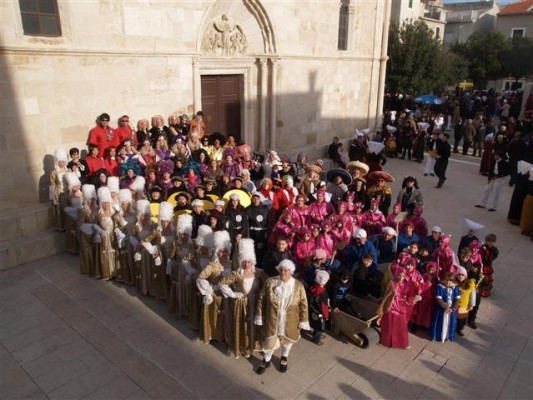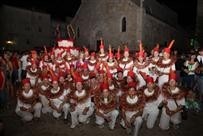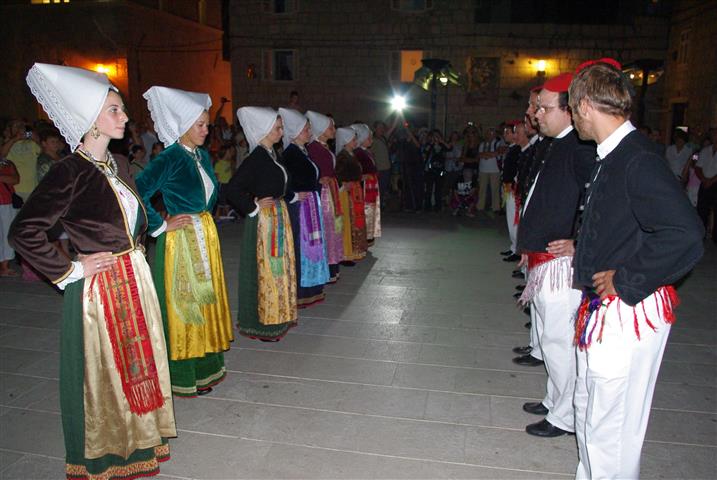
The folk attire of Pag, renowned for its beauty, has not changed for centuries. The traditional array and ornamentation have been handed down from generation to generation as a token of the islanders’ great love for their cultural and historical heritage. A relief image of the Blessed Virgin Mary in the lunette of the parish church portal as the patron saint of the islanders wearing their traditional attire shows that the Pag costume had its origins in the Late Gothic/Early Renaissance. The woman’s costume consists of a blouse, skirt and an apron. The blouse is worn as an undergarment tucked into a woollen skirt and consists of an upper (opleća) and lower (stana) part, connected at the waistline. The front neck-to-waist opening is decorated with intricately crafted lace. A short jacket with long sleeves is worn over the blouse, so that only the front of the shirt, sleeves and decorated parts of the blouse are visible. The skirt is made of fine home-woven linen which, depending on the season, occasion and taste, can be dyed red, yellow, green, brown… It consists of two parts – a bodice and a skirt, connected at the waistline. The skirt has numerous fine vertical folds, while the horizontal fold (soc) is about 30-40 cm from the hem decorated with a thin ribbon (pasaman). A silk apron (travesa or traversa) covers the front of the skirt, almost all the way down to the hem. In the past, the skirt and the apron were fastened with a belt, into which a silk scarf (facol) was tucked. The women of Pag wear stockings (kalcete) in the same colour as the skirt and shallow shoes (gondolete). They cover their heads with thin linen kerchiefs (pokrivaca) trimmed with teg lace and fastened with decorative filigree hair pins.Walking the streets of the town of Pag, you may meet elderly women dressed in rather short black skirts and black blouses, and wrapped in black scarves during winter months. This attire, worn daily and on holidays and festivities, consists of a blouse, skirt (fuštan), apron (travesa) and jacket (jaketin). The festive version is made of finer linen and decorated with a necklace consisting of filigree silver or gold-plated beads (peruzini) and earrings with three round or pear-shaped filigree pendants (rocini od tri perle).
The festive male costume consists of a white linen shirt, white trousers (brageše), waistcoat (krožat) and a draped coat (kaparan). A silk scarf (facol) adorns the waistline, and a small red cap covers part of the head. Men also wear socks (kalcete) and shoes (postole).The islanders were best protected by a valuable and beautiful, though rather forgotten, item of apparel – the kaban, a wide cloak with a hood, adorned with blue or red lining. The unique Pag costume is renowned throughout Europe, while the pokrivaca, teg and the lace of Pag are listed as protected cultural goods of the Republic of Croatia, with the label Croatian Original.
The lace of Pag, known and valued far and wide, is by the skilled and hard-working hands of women from the town of Pag. The hands that create this splendour of interwoven threads are the hands of mothers and grandmothers who have always carefully washed them to eliminate any chance of soiling the lace, hands which for many trying years served as financial support to families and children who had to leave the town to further their education. Today there isn’t a family in Pag that does not have framed lace on the walls of their homes, which they proudly show to every guest, and which they also assiduously safeguard to preserve it so that it may be inherited by their children and grandchildren. The beginnings of the story of lace in the town of Pag may possibly be found in the lunette of the parish church, which depicts the people of Pag under the protection of their patron, the Madonna, in shallow relief. The work of a 15th century sculptor (attributed to Petar Berčić, an associate of Juraj Dalmatinac) presents a stylized portrayal of attire, on which the woman’s headdress stands out in particular.They cover their heads with thin linen kerchiefs (called pokrivaca), trimmed with lace at the ends, and tied in a specific manner. The breast of the woman’s white linen blouse and the headdress were adorned with exquisite lace called teg (meaning women’s handicraft). The Pag teg is a combination of techniques involving stitching and the initial reticella engraved on a linen base with geometric decorative motifs. Pag lace was woven in the convent of the Benedictine sisters, where the nuns taught their wards and young girls from the town how to make lace. The collection which the Benedictine sisters of Pag have collected and maintained for over 150 years was proclaimed a cultural treasure of Croatia by the Croatian Ministry of Culture.
After the establishment of the lace-making school in 1906, lace became a decorative element on its own – “Pag lace,” an adornment on clerical vestments, tablecloths, handkerchiefs and clothing. The school was established by Pag’s mayor at the time, Frane Budak, and the first instructor was Nilla Rakamarić, who trained in Vienna. During this time, Pag lace was present at many arts and craft exhibitions from Vienna to Paris, London and New York, often receiving awards.The lace school operated continually until World War II, and with longer or shorter interruptions thereafter. It began to function as part of the Bartul Kašić Secondary School in 1994. Besides the school, the Frane Budak Association of Lace Makers also plays a vital role in the preservation of Pag lace. The requirements for making Pag lace are a small semi-circular pillow with hard filling, a drawn pattern, a needle, white thread and steady and always clean hands. The tradition of stitching was maintained by Pag’s women by making adornments for their traditional clothing, and later unique decorative items. Another particular feature of Pag lace is that before there were no recorded patterns for making it, rather the patterns and methods were handed down from generation to generation via oral tradition and practical work. Since 2009, the craft of lace-making in Pag, Lepoglava and Hvar has been recorded on UNESCO’s Intangible Cultural Heritage List.
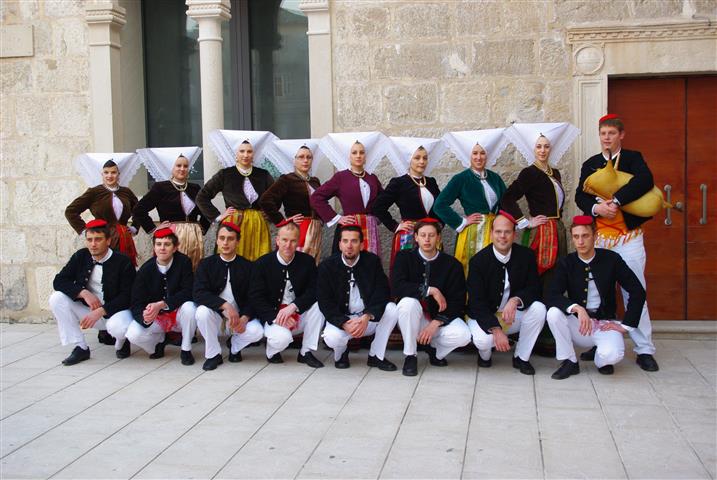
The tanac folk dance first emerged in the latter half of the 19th century. Zvonko Usmiani revived it after World War II, based on the stories and demonstrations of elderly citizens, thus preserving the almost forgotten customs in the town of Pag. The members of the Družina Culture and Arts Association perform the tanac, dressed in traditional attire, at various folklore festivals, during the carnival and other celebrations. The tanac is performed to the accompaniment of an instrument called the mišnice or mih (resembling a bag pipe), made from a sheep or goat hide with a tube (mouthpiece) through which air is blown and a dvojnice (akin to a wooden flute) at the bottom.
Paška Robinja (‘The Slave Girl of Pag’) is a folk drama first published in the magazine Zora Dalmatinska in 1846. It is traditionally performed during carnival season. The drama is linked to the Battle of Krbava Field. The Ottomans take a daughter of Ban Vlasko captive. The slave girl's fiancé, a son of Ban Derenčin, searches the town squares where the Ottomans sell their slaves. Having found her, he pretends to be a trader who wants to buy her. Although the drama did not originate on Pag, the people of Pag consider it their own and, over the centuries, it became an inseparable part of their cultural tradition.
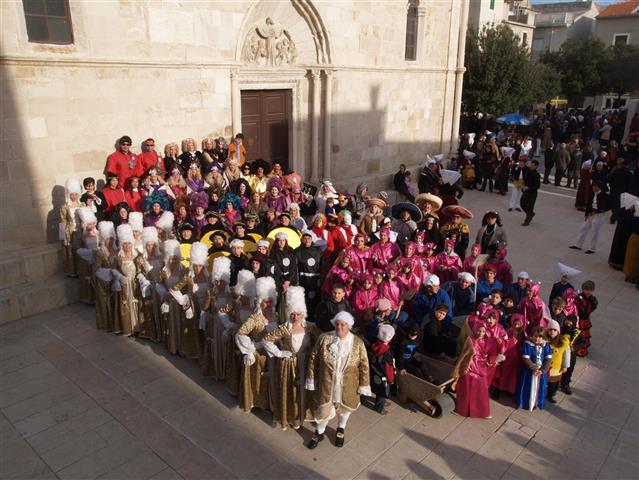
The Pag Carnival is a tradition that brings togerher all of its citizens with cultural and entertaining events. The winter carnival begins on the first Saturday after the Epiphany and ends on Ash Wednesday, the beginning of Lent. On Saturdays people enjoy tanci (socji) – the masked dances. The Carnival events move to the central town square (pijaca) for the last three days. After the official handover of the town keys, a traditional Pag circle dance is performed to the music by Zadar-born composer Šime Dešpalj. The carnival party is joined by the members of the culture and arts associationed called Družina (‘The Troupe’), who perform the folk drama called The Slave Girl of Pag. The town of Pag also boasts a summer carnival, as the carnival with the longest tradition, has been held on the last weekend in July since 1959.


















